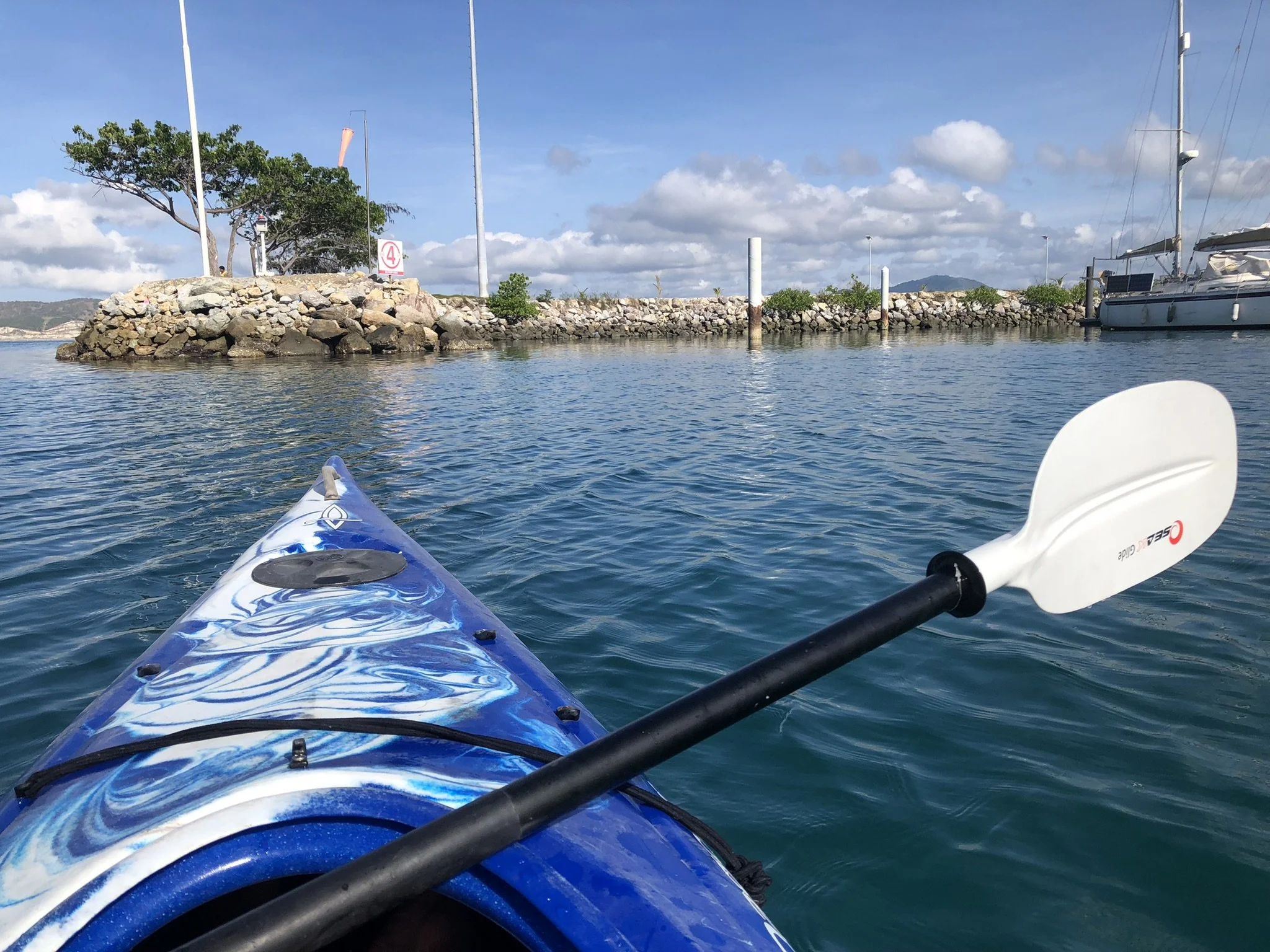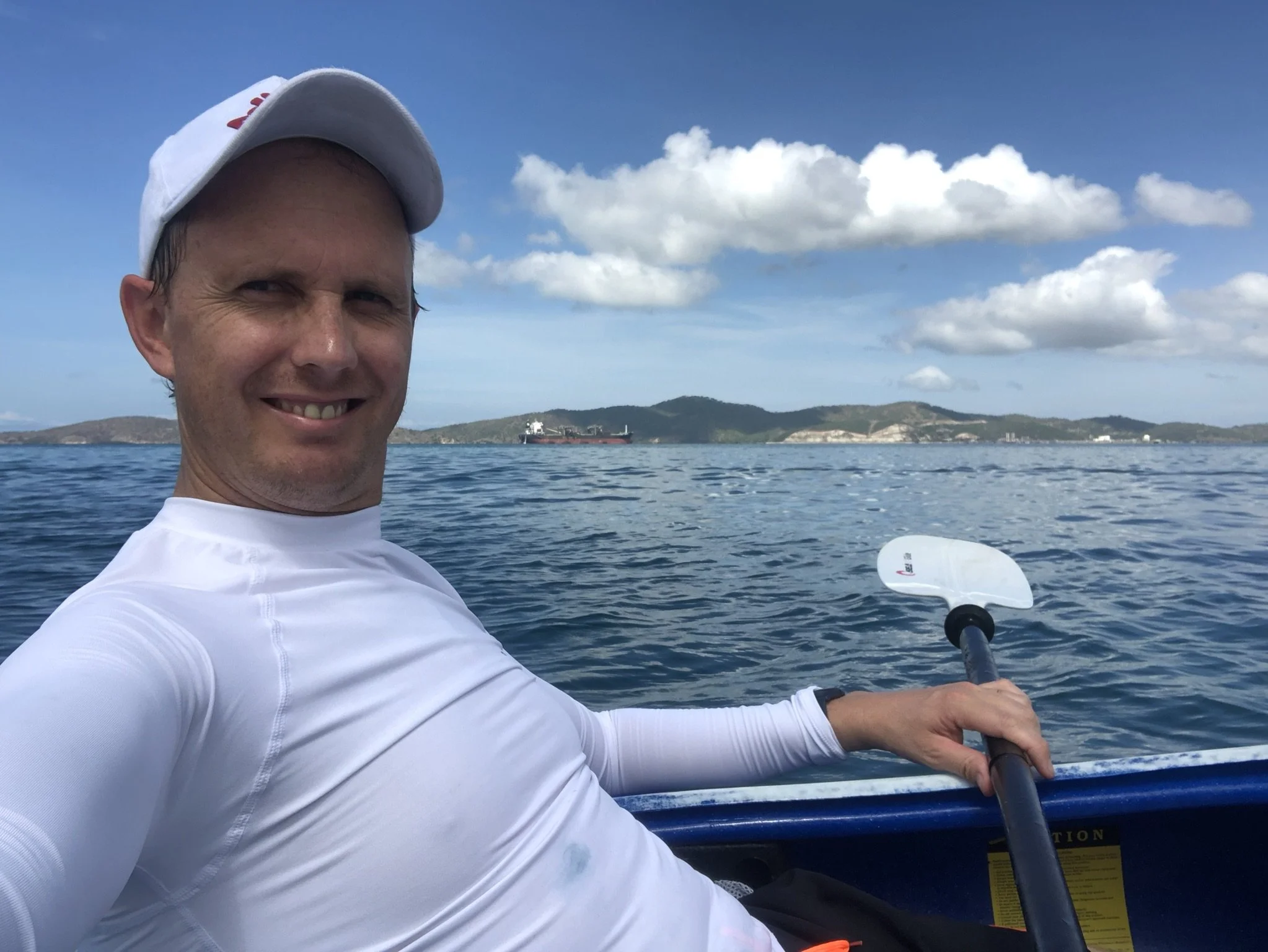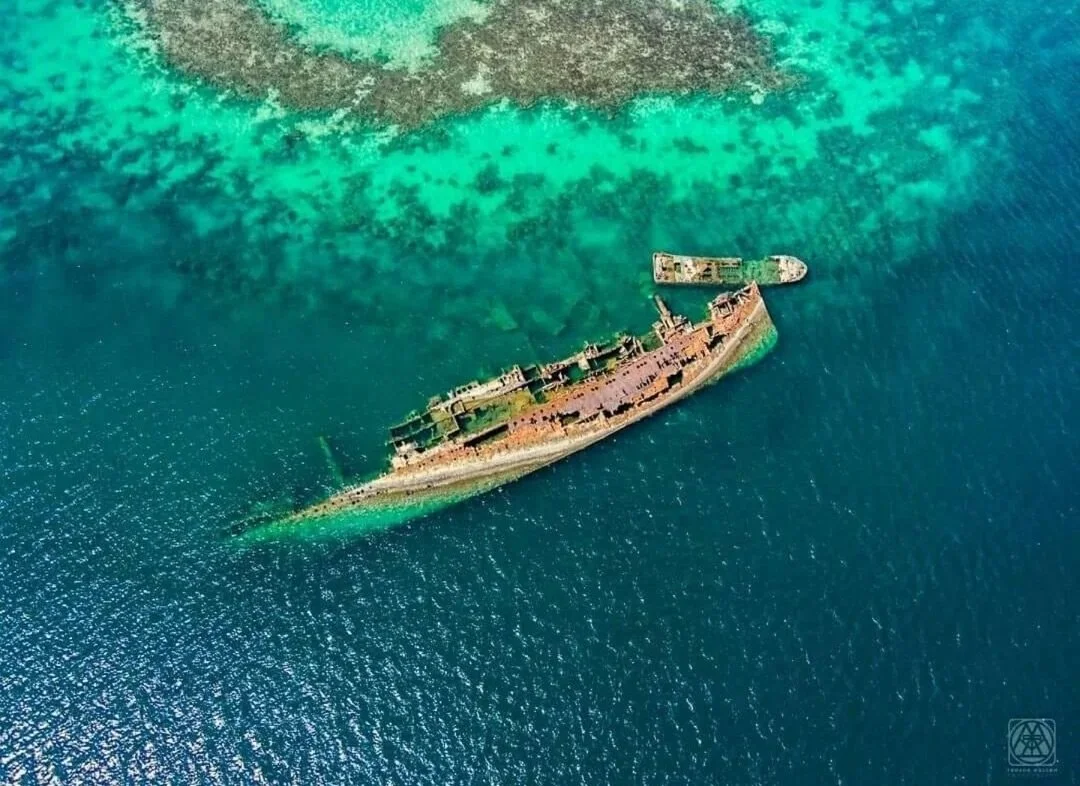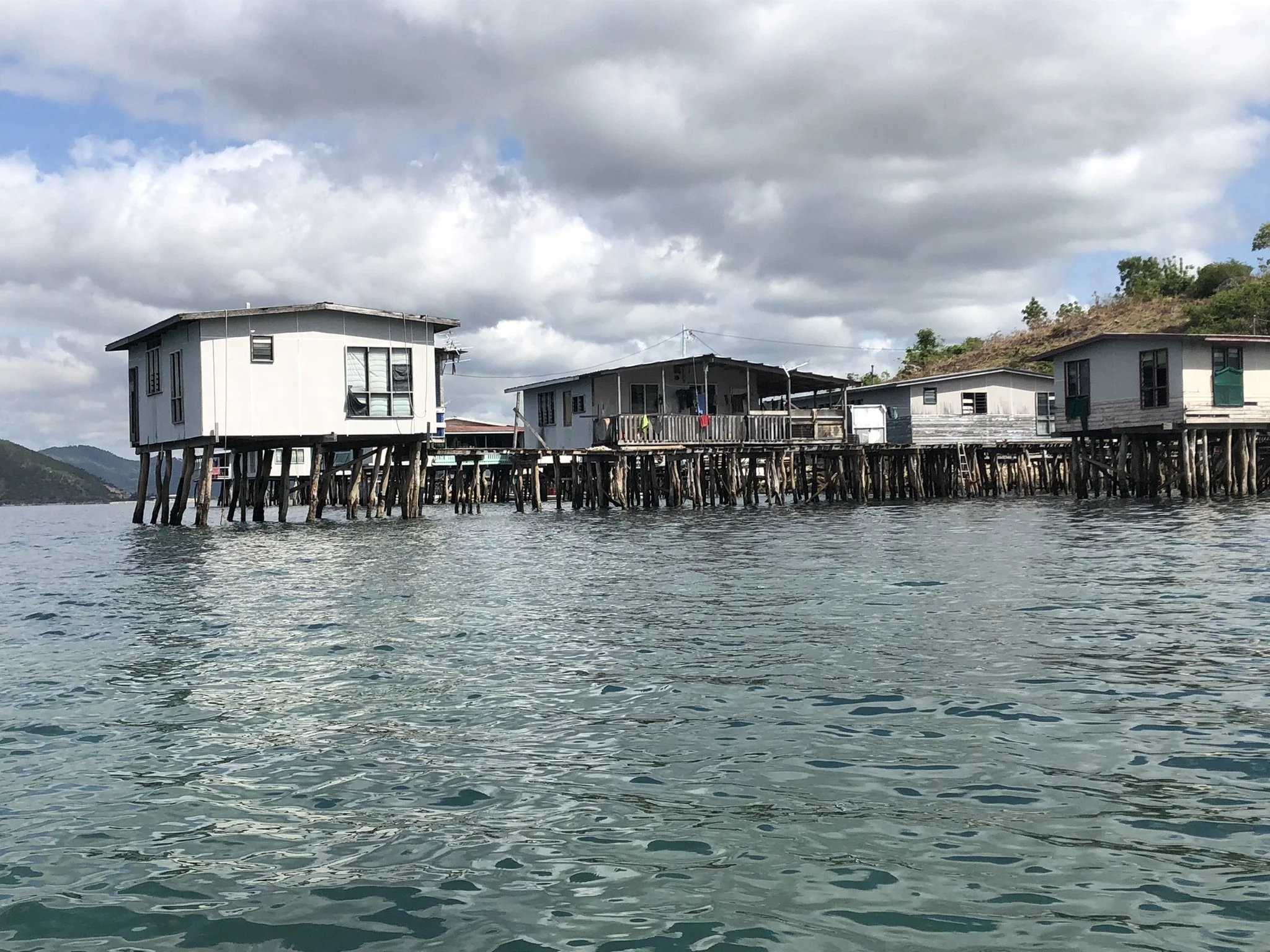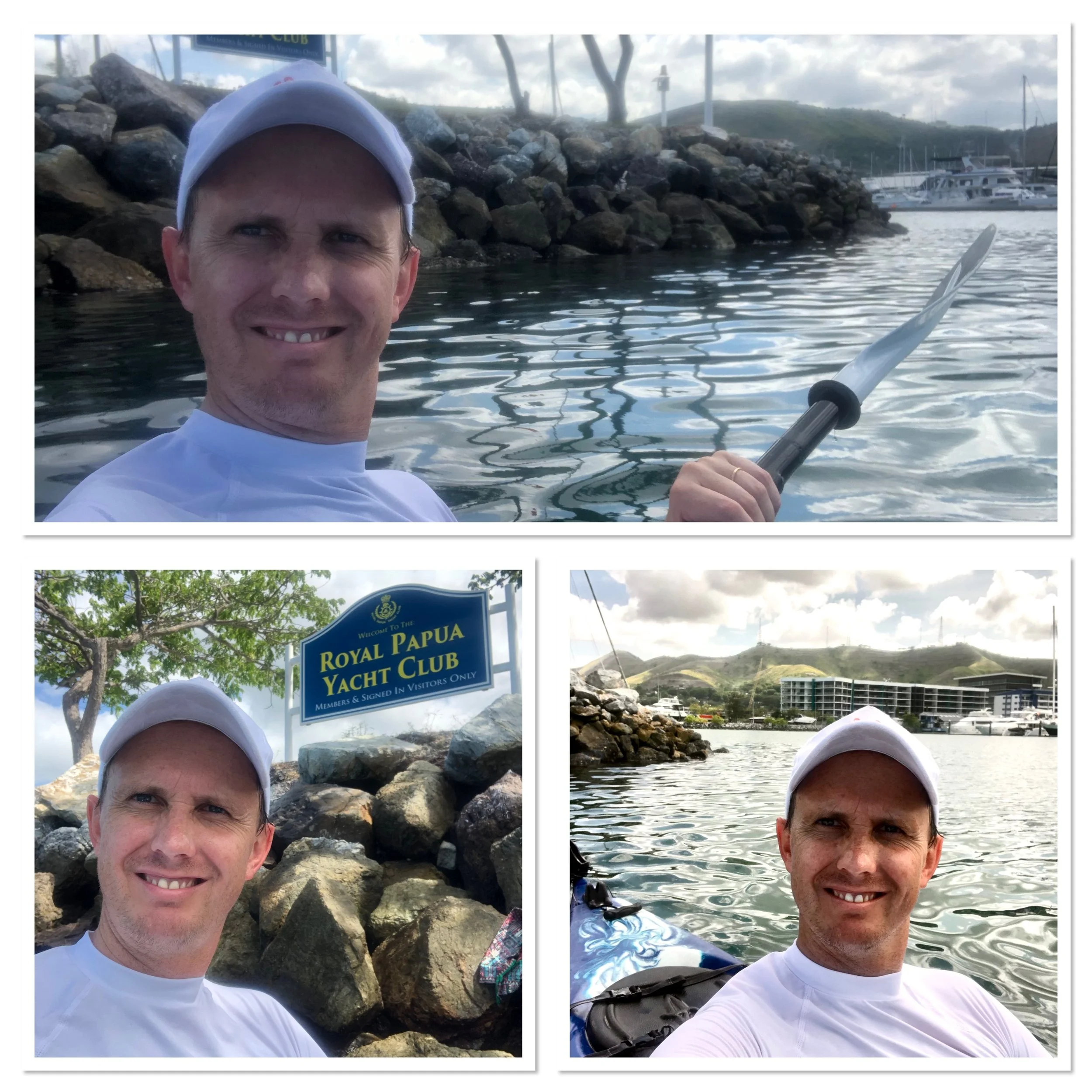Royal Yacht Club: Kayaking on the Coral Sea!
Saturday, October 15, 2022, 8 AM. I'm right on time for my sailing lesson with Rose-Lee, the instructor at the Yacht Club. Indeed, for the past few months, I've started learning how to sail a Hobie Wave, a small catamaran. I have some experience handling boats on a 420 (pronounced "quat’ vingt" or "quatre cent vingt"), but since they don't have that type of dinghy here, I switched to the smallest sailboat in their magnificent fleet.
That being said, at this moment, I find myself facing the sea, side by side with Rose-Lee. We notice that the water is like oil—no wind at all. We have to face it: it's not the right time to take to the sea with a sailboat.
At that very moment, I see a young man launching a outrigger canoe, the kind you only find in Papua New Guinea. Of course, it's the sporty version, made of aluminum and plastic. That’s all it takes to spark my desire to try it.
Unfortunately, you need to be a member of an association to use such a boat! Well, does the Yacht Club offer sailing with that kind of canoe? No, they don't. However, there is a kayak available. Perfect! I’ll go for the kayak. A classic. At least I’ll feel comfortable right away.
Rose-Lee advises me to head right as I leave the marina and aim for the wreck of a military ship sunk by the Japanese fleet during World War II. Ah, that sounds great! I hit the water, and off I go.
A few strokes of the paddle through the harbor, and I pass shiny new yachts next to makeshift boats, then ships used for tourist excursions around the area, especially to Fishermen Island. Finally, I pass the channel. Freedom is mine!
Before me stretches Fairfax Harbor, the gateway to the country (for those arriving by boat, of course). Two massive buildings proudly stand in the middle of the bay. Securely anchored, they have no intention of setting sail anytime soon. I ignore them and head toward Tatana Island. It is there, just a few nautical miles from the shore and the stilt village of Hanuabada, that the wreck lies.
At first, it's an indistinct mass of iron and steel rising from the water's surface, and after a few regular paddles, I begin to make out a hull. A deathly silence envelops the place. It is here, on June 18, 1942, that the firestorm of a Japanese air raid struck the MV MacDhui, an Australian military vessel, killing four crew members, though it didn’t manage to sink it completely.
Today, I am alone facing this witness to the Pacific War, and as I gently circle the wreck, I feel emotion rising within me. Lying on its side, the relic, just 80 years old, rests peacefully on the edge of the coral reef.
From top to bottom and left to right: The MV MacDhui upon its arrival on June 15, 1942, in Fairfax Harbor, from which it has never departed. The bombing on June 18, 1942. And its wreck, seen from the sky, today.
Hanuabada
Alright, the sun is starting to beat down, I need to head back.
I can’t help but pass by the nearby wooden village and wave to the locals who are greeting me. Here and there, children play in the water, collecting plastic.
I offer a “Gud pla day lo you” which is returned as I reach their level. There, a fisherman sitting on a raft no bigger than mine, but more traditional, is busy with his fishing line. I ask him, “Do you live here?” “Yes, here,” he replies, pointing to one of the huts in the distance. “Hanuabada village?” “Yes, Hanuabada,” he answers with a big smile, probably amused by my accent. It's true that saying "Hanuabada village" is redundant, as the name itself means 'big village' in the Motu language.
I continue my detour, eventually reaching the very new U.S. Embassy, then the Peninsula residence where some of our TotalEnergies colleagues live, and finally the marina to return the boat to its owner.
In the end, despite the lack of wind and sails, what a beautiful morning this little kayak ride gave me!


